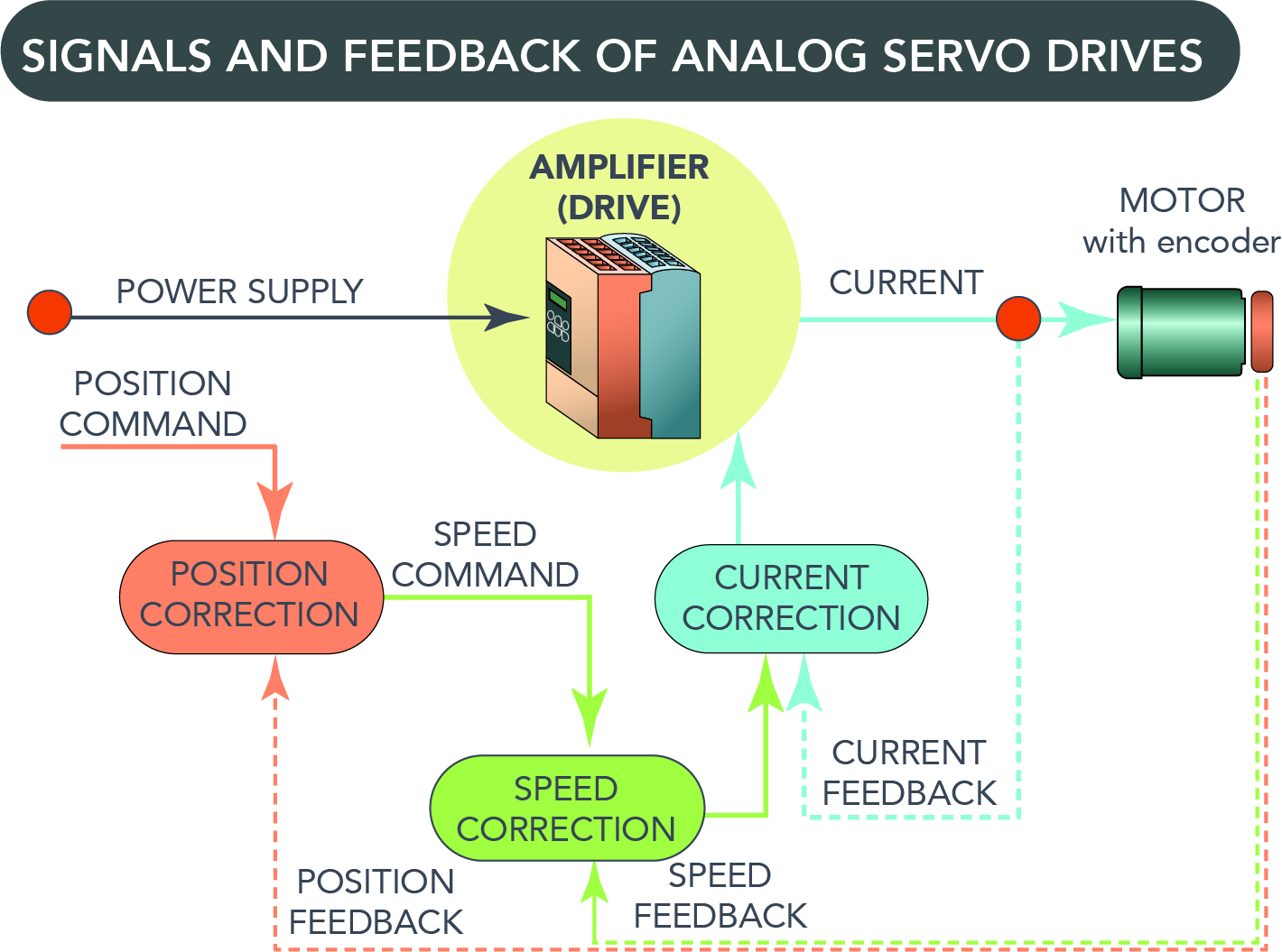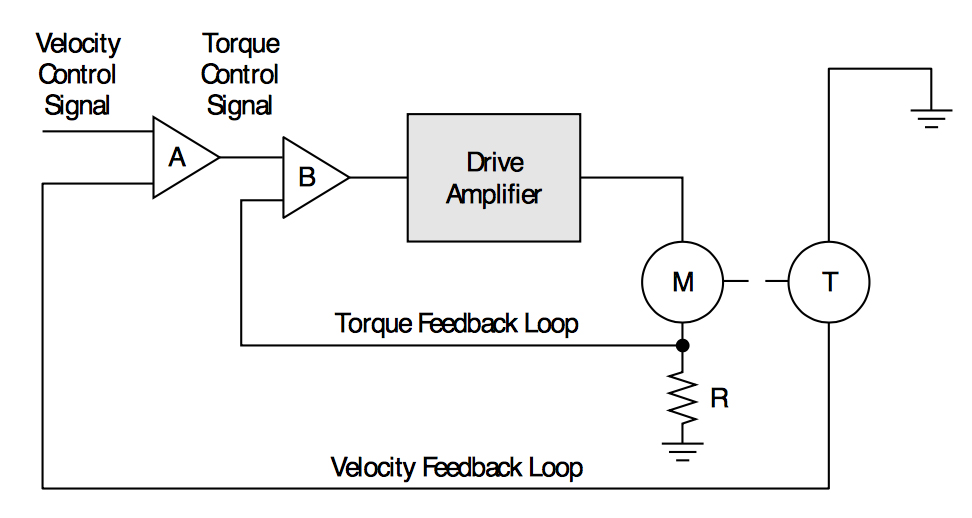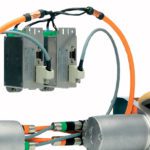The purpose of a servo drive is to convert low-power signals from the controller to high-power signals to the motor, instructing it to produce the desired torque or velocity. Servo drives (also referred to as servo amplifiers) can operate on either analog or digital input signals.
Analog servo drives receive ±10-Volt analog signals from the controller and convert these to current commands for the motor. The drive can control velocity or torque, and both the velocity and torque feedback loops are typically PI (proportional-integral) controllers.
A signal of +10-V indicates full velocity (or torque) in the forward direction, and a signal of -10 V indicates full velocity (or torque) in the reverse direction. A signal of 0 V indicates standstill, and other voltages indicate speeds (or torques) between full forward and full reverse, proportional to the level of the signal.

Unlike digital servo drives, analog types have no processing ability — that is, no ability to make computations in the drive. This is actually a benefit in terms of servo response time, because the system doesn’t spend time waiting for a digital processor to make the necessary computations and determine the response.
The tuning process for analog servo drives is also simple, with gain values and other parameters set via potentiometers.
With analog servo drives, high gains can be set, which makes for very stiff servo systems. This means that a small velocity or torque error will produce a large error signal. The result is very accurate control, even when there are significant changes in the load on the motor. For this reason, analog drives are commonly used when the motor’s velocity or position needs to be precisely controlled. In fact, when position is the most important parameter, analog servo drives are often used in velocity mode with higher-level controllers having responsibility for the position control.

When used with sinusoidal commutation, analog drives also exhibit very smooth motion at low speeds. But the key benefits of analog servo drives are their low cost and straightforward setup versus digital versions.







Leave a Reply
You must be logged in to post a comment.